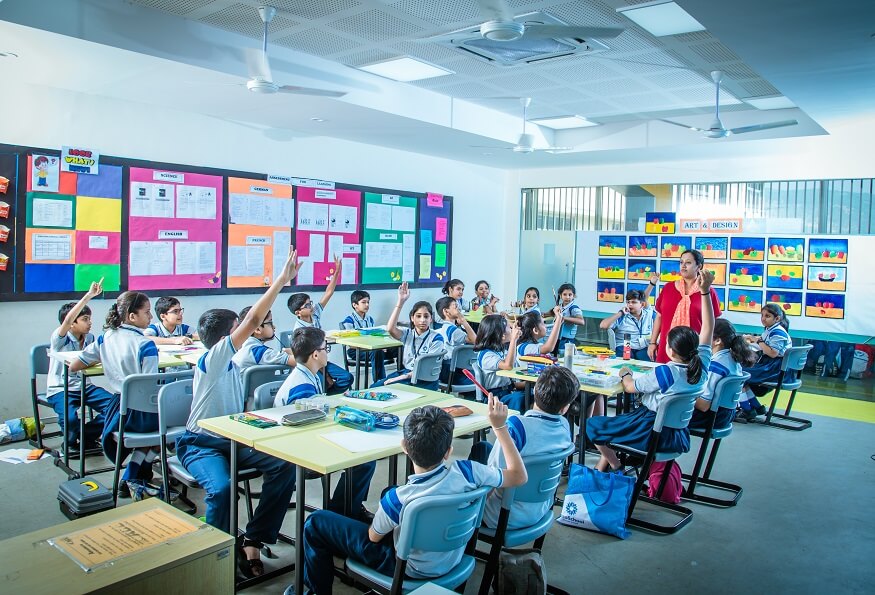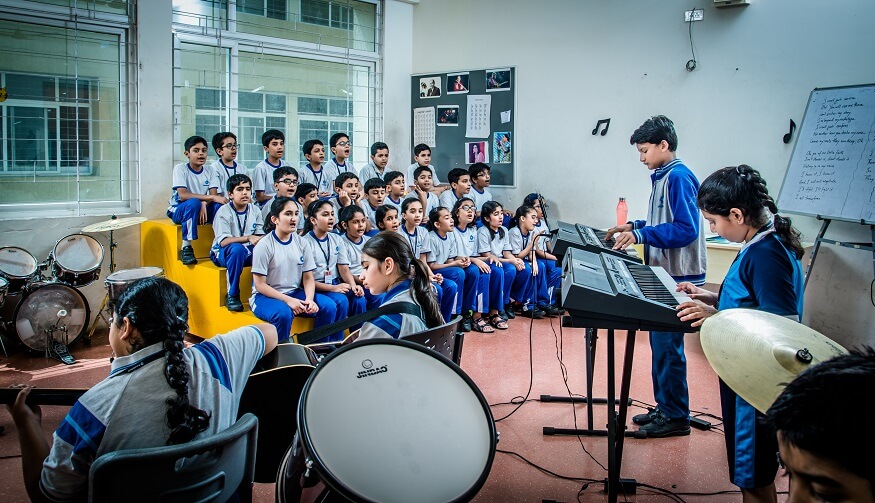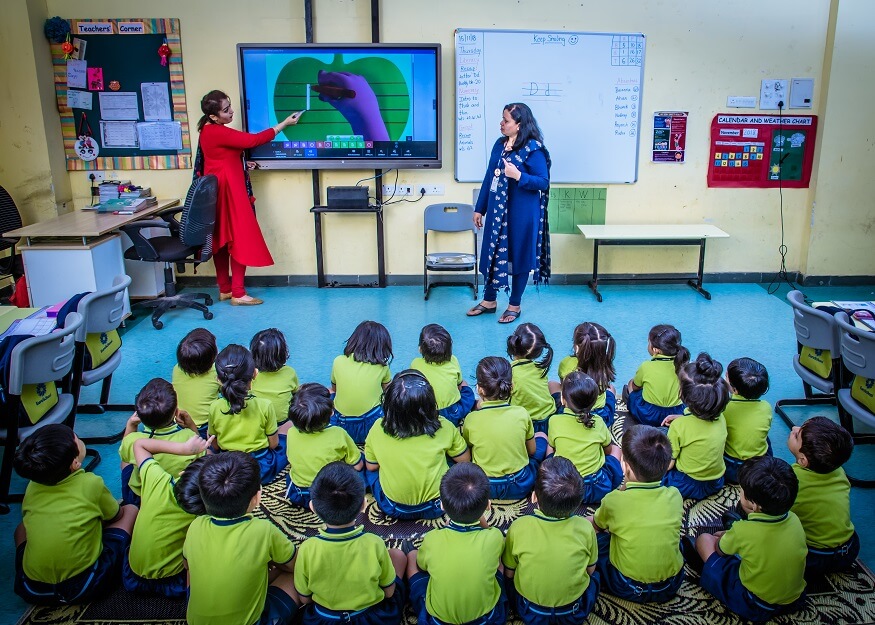Be it a child or an adult, we all take part or have a part or share in something every single day of our life. We actively participate in functions, rituals, gatherings, competitions, or engage in a play and so much more on a daily basis. So today, we are going to talk about student participation in class discussions and look at some examples as well.
If a child takes part in an activity or participates in anything, such as a conversation by simply listening to and talking with others, or a child participates in a sport by joining a team and taking part in practices and games, it helps them to build their social circle and gain immense confidence in themselves and in the things they can do.
The Importance of Participation
So, one may ask, why is participation so important to children? Well, having public involvement increases knowledge and brings more information to the decision, including knowledge about the context where decisions are implemented, such as history and people’s personalities. Information about scientific or technical knowledge, is the type of knowledge and information we hold, it makes the difference between a good conversation and a bad conversation. Similarly, it also applies to good and poor decisions that we make.
Since we now know that participation is the foundation for confidence and self-esteem, there are frequently asked questions regarding how to encourage students to participate in class. Mentioned below are a few tips that can be used to increase student participation in discussions.
- Find out why students do not participate.
- Show students that their fears are unfounded.
- Create an atmosphere that encourages participation.
- Give students another outlet.
As a teacher, it could be challenging to have group discussions, but here are some realistic ways for teachers to encourage group participation: Facilitating some form of group cohesion is necessary. For any form of group activities, educators must ask each student to introduce themselves to the rest of the group, and all members must acquaint themselves before attending the class or before starting the task. Educators must dedicate group work and consider introducing an activity that could act as an icebreaker, designed specifically to build a sense of teamwork.
Also Read: Tips for engaging children in arts and music
Tips to encourage and increase students’ participation in classroom activities:
- Listen carefully and take the time to listen.
- Be patient.
- Foster friendships and positive relationships.
- Involve physical and outdoor activities.
- Issue invitations to social engagements and volunteering.
- Promote affirmation and self-care.
- Initiate regular meetings and group discussions.
- Learn musical instruments.
- Participate in extracurricular activities.
Mentioned below are tips for successful group work participation. By following these steps, individuals or participants can receive the help they need to enable a group to work effectively together.
- Have clear objectives.
- Set ground rules.
- Communicate efficiently.
- Build consensus.
- Define roles.
- Clarify.
- Keep good records.
- Stick to the plan.
At each stage, one should try to agree on goals and try to achieve those goals in a timely manner.
Often, parents ask how to encourage active participation in children. Well, some suggestions that have been tried and tested before include talking with children regularly. Having knowledge about your child’s development and progress at school is important. A parent actively participating gives children an affirmation of encouragement to do well. You can help your child understand why physical activity is important and be a part of their activities to boost their confidence.
Ways to encourage participation in class discussion among kids.
- Emphasise fun.
- Choose an activity that is age-appropriate and helps with development.
- Plan ahead.
- Provide a safe environment.
- Provide active toys.
- Be a role model.
- Play with children.
As an educator, one may have noticed different types of kids, some talkative while some are pretty much quiet. So, mentioned below are tips on how to encourage quiet students, especially for participation in class discussions.
- Encouraging students to participate.
- Create a safe space.
- Start small groups.
- Assign conversation partners.
- Let them prepare.
Tips for Encouraging Quiet Students to Participate
There are ways to help a shy student, and there is absolutely nothing wrong with being an introvert. But helping kids to have self-esteem will help them be a better version of themselves. Similarly, frequently asked questions include how to engage talkative students and how to deal with a chatty classroom? Mentioned below are a few tips:
- Encourage active listening.
- Try silent signals.
- Use talk moves.
- Channel chattiness into productive talk.
Remember, the flipside to talking is listening, and silent signals go a long way to decrease the amount of noise in the classroom. Here are ways an educator can promote peace and calm in the classroom:
- Decorate with intention.
- Add plants.
- Employ flexible seating.
- Give students space to chill out.
- Let in the natural light.
- Play calming music.
- Stick to routines.
- Teach strategies for calming down.
Often, there are questions regarding the difference between engaging and participating. So, engagement and participation are processes that involve ongoing communication between communities and services. There should be time and space built into the process to ensure communication is reflective of what is being said and decisions being made.
Mentioned below are ways to engage participation:
- Keep your meetings short.
- Add the element of surprise.
- Focus on useful conversations.
- Create the agenda with attendee input.
- Encourage questions from participants.
- Make it a live and interactive conversation.
It is often a challenge to increase team participation, hence mentioned below are a few ways to do so. These tips will improve teamwork within students, providing higher success in class results.
- Build diverse and inclusive teams.
- Define roles and responsibilities for every student.
- Build trust within the team.
- Encourage clear, frequent communication.
- Give teams autonomy in decision-making.
- Facilitate skills to ensure group participation.
- Exhibit participative and interpersonal communication skills.
- Respect and acknowledge diversity, ensuring inclusivity.
- Manage group conflict.
- Inspire creative thinking among group members.
Applying a variety of participatory techniques can easily improve group participation. There are effective participation strategies that can be used on a regular basis, such as: Calling on students who usually do not volunteer. Seeking answers from students who do not raise their hand instead of asking those who usually raise their hands. Allowing some wait time before calling on a student. Calling the student’s name at the end of the question. Allowing the students to answer questions without any help.
So, why is it important and how to encourage students to participate in class? Well, students who participate in class have studied the material well enough to introduce new concepts to their peers. This level of thinking goes beyond simple comprehension of text and can also improve memory. Participation also helps students learn from each other by increasing comprehension through cooperation.
Also Read: How Parent Engagement Leads to Student Success
At EuroSchool, we apply all strategies to improve students’ participation in classroom activities that actively promote encouragement among students and provide all the help a student needs to break barriers and step into the shoes of confidence and self-esteem











